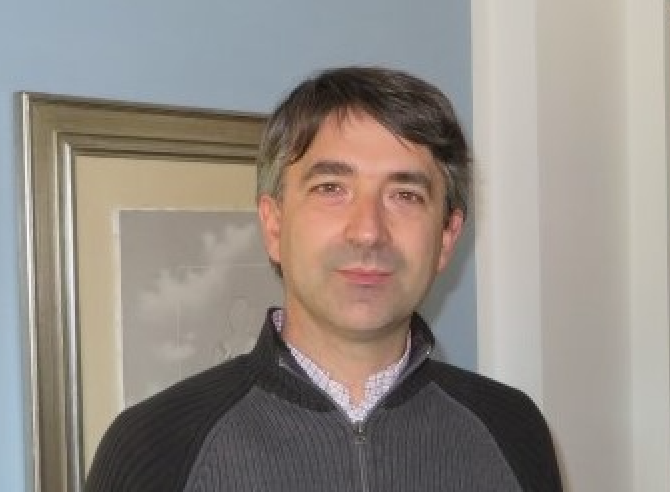Gian Luca Delzanno
Los Alamos National Laboratory
Seminar Information
Engineering Building Unit 2 (EBU2)
Room 479
Seminar Recording Available: Please contact seminar coordinator, Jake Blair at (j1blair@ucsd.edu)

The Earth’s magnetosphere comprises different particle populations with widely different energies that coexist and interact with a variety of waves. It is commonly referred to as a ‘system of systems’ to acknowledge its complex behavior that could not be understood by analyzing the individual components alone. Unfortunately, the low-energy (cold, <100 eV energy) particle populations are very poorly understood due to the difficulty of their measurements. This holds back magnetospheric research, particularly systems level understanding.
In this talk, I will begin with a brief introduction to magnetospheric physics that highlights the role of the cold particle populations. I will touch upon the problems with their measurements and how these problems could be overcome. I will then focus on the impact of cold electrons on whistler waves, including new results that show how whistler waves can damp via drift instabilities and heat the cold electrons. This somewhat surprising result highlights new ways for different magnetospheric particle populations to couple via waves.
Gian Luca Delzanno is a Staff Member with the T-5 Applied Mathematics and Plasma Physics Group, Los Alamos National Laboratory, since 2007. His main research activities are theoretical and computational studies of plasma and space physics problems. His research interests include the development of novel numerical methods for multiscale plasma-physics modeling, spacecraft-plasma interaction, radiation belt physics and radiation belt remediation, and the development of new space mission concepts. Some of his research highlights include the 2017 R&D100 award for the SHIELDS framework for space weather modeling, the development of a new spacecraft charging mitigation scheme to enable the operation of high-power electron beams for space applications (which led to the B-SPICE rocket experiment that launched in November 2024) and the development of the IMPPACT mission concept to study the low-energy populations of the Earth's magnetosphere. Dr. Delzanno was a Post-Doctoral Associate at the Politecnico di Torino from 2003 to 2004, and a Post-Doctoral Associate with the T-15 Plasma Theory Group at the Los Alamos National Laboratory from 2005 to 2006. He received the M.Sc. degree in Nuclear Engineering and the Ph.D. degree in Plasma Physics from Politecnico di Torino, Torino, Italy, in 1999 and 2003, respectively.
